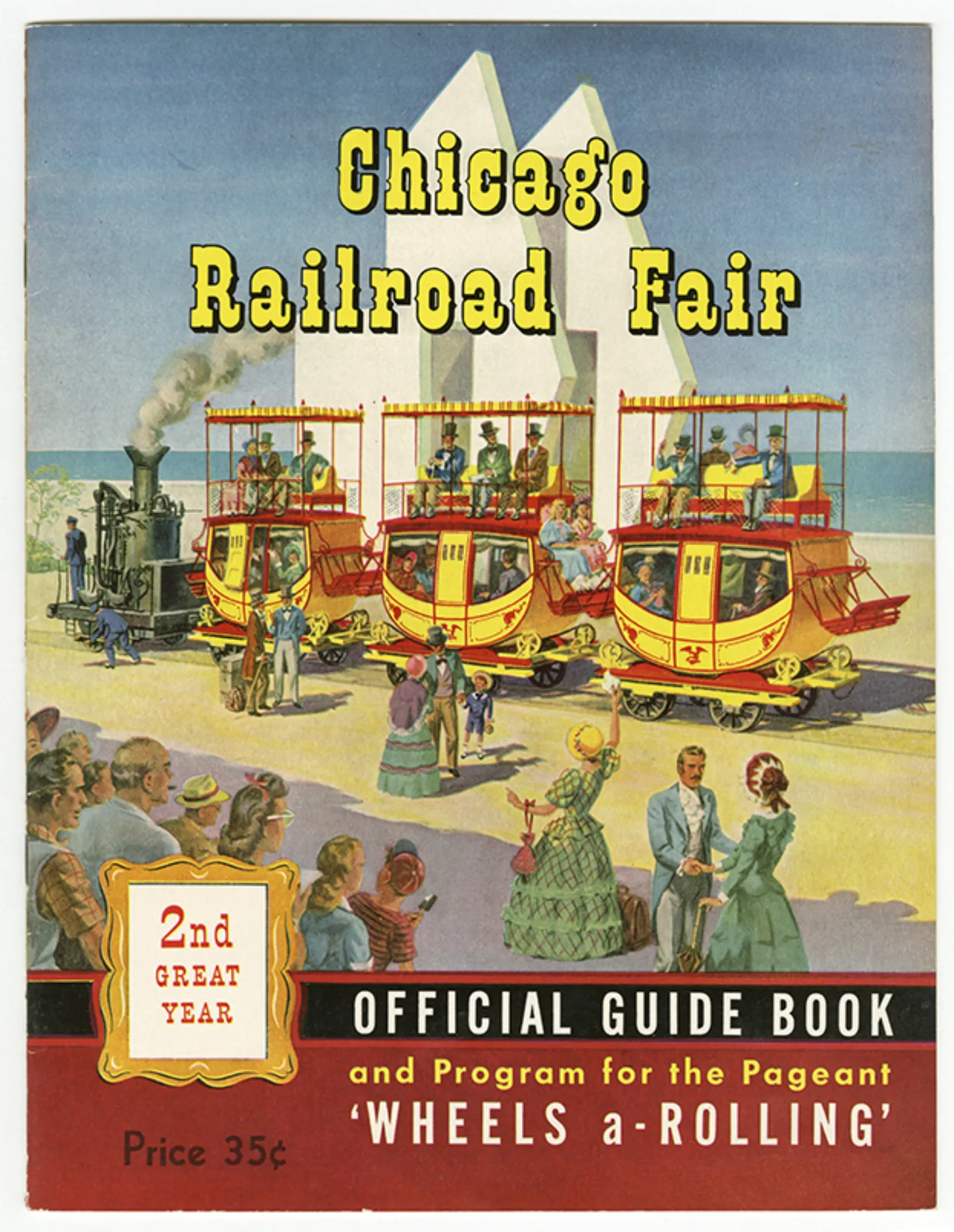You may have heard of the World’s Columbian Exposition and the Century of Progress, but have you heard of the Chicago Railroad Fair? In the summers of 1948 and 1949, thousands of visitors flocked to Burnham Park to experience 50 acres of attractions dotting the lakefront between 21st and 31st Streets.
The Chicago and Northwestern Railroad—the successor to the Chicago, Galena, and Chicago Union Railroad — put on the Railroad Fair to commemorate the first successful trip west from Chicago on the Pioneer steam locomotive in 1848. With only six months preparation, the fair opened in July of 1948 with a grand parade of locomotives making their way down State Street. Because of its success, the fair returned the following year, opening in May and closing in October. Offerings at the fair ranged from a water show, gardens, children’s theater, live bears, a circus, an excursion train that ran the length of the grounds, and nightly fireworks.
A 5,000-seat grandstand was assembled for spectators to enjoy the “Wheels a Rolling” pageant that took place four times daily. The musical presentation traced the development of transportation through song and dance with a montage of performers in period costumes.
A copy of the Railroad Fair’s official guidebook is on display now in our exhibition Wheels, which runs through September 23.
Several of the participating railroads sponsored exhibitions. “Florida in Chicago” was the theme of the Chicago and Eastern, while the Illinois Central treated visitors to a walk in a recreation of the streets of the old French quarter in New Orleans. We’ve written in the past about harmful depictions of Native people at the World’s Columbian Exposition; the Railroad Fair exoticized and dehumanized Native Americans at the Santa Fe Railroad “Indian village,” where more than 125 Indigenous men, women, and children lived in replica “traditional” buildings at the fair and demonstrated crafts, sold handmade items like basketry and beadwork, and held “performances” throughout the day.
A unique feature of the fair was the chance to view documents from the National Archives. The Freedom Train made a stop at the fair on its 1947-1949 trek across the country, offering a peek at treasured documents such as the Declaration of Independence, the Constitution, and the Bill of Rights.
The Chicago Railroad Fair may not be as deeply imbued in memory as the other two Chicago fairs, but it is fondly remembered by rail enthusiasts and attendees. The impact of the fair’s design and layout with its variety of themed areas/lands can still be seen in amusement parks today. Indeed, it is believed that Walt Disney, one of the fair’s notable attendees, took inspiration to create Disneyland.
About the Author
Jo Ellen McKillop Dickie is Reference Services Librarian and Selector for Reference.
